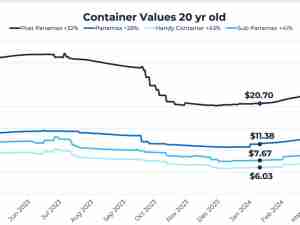Billionaire’s Australia iron ore mine set to ship first cargo
By: Reuters | Nov 30 2015 at 09:53 PM | Maritime
SYDNEY - Australia’s Roy Hill iron ore mine is set to ship its first cargo, marking the start up of the last of the mining-boom era mega projects in Australia.
The $10 billion development has been led by Gina Rinehart, one of the world’s wealthiest women, whose fortune comes from mining the rust-red northwestern Australian outback.
“This is a truly momentous occasion as we receive the first vessel alongside the Roy Hill wharf and the first of our high grade product is loaded for the steel mills of Asia,” Rinehart said in a statement on Tuesday.
The project, financed with $7.8 bln in funding from export credit agencies and commercial lenders, has been dogged by concerns over its timing, with a surge in new iron ore mines already waning as the Roy Hill mine took shape.
Iron ore prices have slumped more than 75 percent since construction of the mine began four years ago in partnership with South Korean steelmaker POSCO, Japan’s Marubeni Corp and Taiwan’s China Steel Corp.
Australia’s fastest-growing iron ore miner Fortescue Metals Group earlier this year put the brakes on further expansion, saying steel production in China had peaked, eliminating the need for more ore.
The Roy Hill partners closely guard the project’s cost of production, although analysts estimate ore can be mined and shipped for $40 a tonne, slightly above Fortescue and close to today’s spot price of $42.80 a tonne <.IO62-CNI=SI>.
Most of the ore will be shipped to the partners and other buyers under long-term contracts, with less that 10 percent sold into the spot market, according to the company.
A Sept. 30 deadline for the first shipment was not met, triggering speculation the project was wrestling with significant logistical and construction problems, and that exports would not start until January.
Because million of tonnes of ore had been stockpiled ahead of the official start date at the Roy Hill mine, the two-month delay was unlikely to influence market prices, commodity traders said.
The stockpile is designed to provide early cashflow while the project creeps up over the next 15 months to its maximum operating rate of 55 million tonnes per year.
Analysts pin a massive rise in production on overestimates of China’s appetite for imported ore by sector titans Vale of Brazil and Australians Rio Tinto and BHP Billiton
Together with Fortescue, these companies added 234 million tonnes of iron ore in the past two years - five times yearly U.S. consumption - and intend to inject another 196 million tonnes by 2020.
China’s still buying Australian iron ore, but with so much around and industrial growth contracting, the outlook is bleak.








